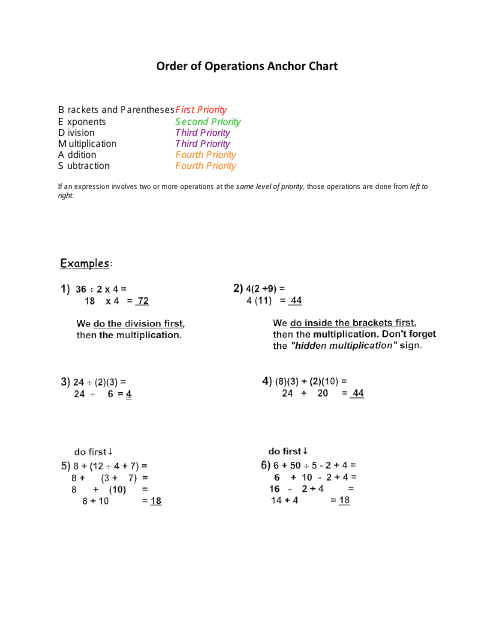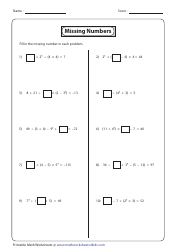Order of Operations Anchor Chart
The Order of Operations Anchor Chart is a visual tool used in mathematics to help students remember the correct sequence of steps to solve mathematical equations. It shows the order in which operations such as addition, subtraction, multiplication, and division should be performed in order to obtain the correct answer. The anchor chart serves as a reference guide to remind students of the correct order of operations when solving math problems.
The Order of Operations Anchor Chart is typically filed by teachers or educators in schools or educational institutions.
FAQ
Q: What is an anchor chart?
A: An anchor chart is a visual tool used by teachers to support instruction and guide student learning.
Q: What is the order of operations?
A: The order of operations is a set of rules that explains the sequence in which mathematical operations should be performed.
Q: What are the steps in the order of operations?
A: The steps in the order of operations are parentheses/brackets, exponents, multiplication/division (from left to right), and addition/subtraction (from left to right).
Q: Why is the order of operations important?
A: The order of operations is important because it helps ensure that mathematical expressions are evaluated correctly and consistently.
Q: How do you use the order of operations in math problems?
A: To use the order of operations in math problems, you follow the sequence of parentheses/brackets, exponents, multiplication/division, and addition/subtraction.
Q: What happens if you don't follow the order of operations?
A: If you don't follow the order of operations, you may get incorrect results when evaluating mathematical expressions.
Q: Are there any exceptions to the order of operations?
A: There are no exceptions to the order of operations. The rules apply universally in mathematics.
Q: Can you provide an example of using the order of operations?
A: Sure! An example of using the order of operations is: 2 + 3 × 4. First, you would perform the multiplication (3 × 4 = 12), and then the addition (2 + 12 = 14).
Q: Can the order of operations change in different countries?
A: No, the order of operations is the same in all countries that follow the standard mathematical convention.




